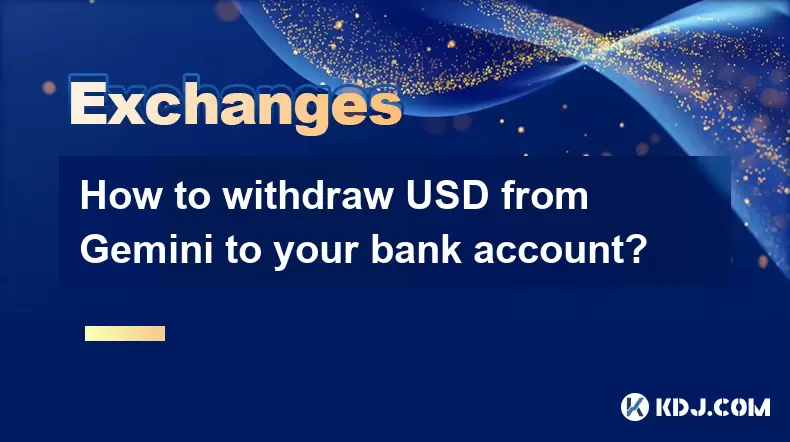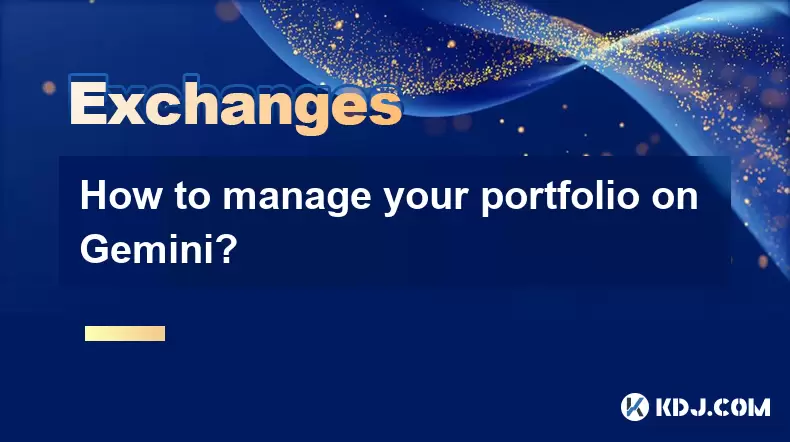-
 Bitcoin
Bitcoin $115000
0.12% -
 Ethereum
Ethereum $3701
4.50% -
 XRP
XRP $3.081
2.99% -
 Tether USDt
Tether USDt $0.0000
-0.01% -
 BNB
BNB $767.9
1.45% -
 Solana
Solana $169.5
3.13% -
 USDC
USDC $0.9999
0.01% -
 Dogecoin
Dogecoin $0.2106
4.30% -
 TRON
TRON $0.3334
1.62% -
 Cardano
Cardano $0.7564
2.54% -
 Stellar
Stellar $0.4165
0.76% -
 Hyperliquid
Hyperliquid $38.75
0.25% -
 Sui
Sui $3.593
3.00% -
 Chainlink
Chainlink $17.08
3.59% -
 Bitcoin Cash
Bitcoin Cash $573.6
4.35% -
 Hedera
Hedera $0.2508
-0.84% -
 Avalanche
Avalanche $23.07
6.46% -
 Ethena USDe
Ethena USDe $1.001
-0.02% -
 Litecoin
Litecoin $120.8
8.17% -
 UNUS SED LEO
UNUS SED LEO $8.943
-0.32% -
 Toncoin
Toncoin $3.400
-5.60% -
 Shiba Inu
Shiba Inu $0.00001255
1.54% -
 Uniswap
Uniswap $9.908
6.32% -
 Polkadot
Polkadot $3.718
2.10% -
 Monero
Monero $303.0
-0.74% -
 Dai
Dai $0.9999
-0.02% -
 Bitget Token
Bitget Token $4.392
0.91% -
 Cronos
Cronos $0.1403
6.31% -
 Pepe
Pepe $0.00001076
1.13% -
 Aave
Aave $267.2
1.80%
What are Coinbase's API frequency limit rules? Will high-frequency trading be restricted?
Coinbase API rate limits vary by endpoint type and authentication status, with public endpoints typically allowing fewer requests per second than authenticated ones.
Jun 13, 2025 at 03:57 pm

Understanding Coinbase API Rate Limits
Coinbase provides a robust and well-documented set of APIs for developers to interact with its cryptocurrency exchange services. However, to maintain system stability and fairness across all users, Coinbase enforces rate limits on API requests. These limits are not static and can vary depending on the type of endpoint being accessed, the authentication status of the request, and whether the user has a professional trading account or not.
The rate limit rules generally fall into two categories: public endpoints (which do not require authentication) and private endpoints (which require an API key and signature). Public endpoints, such as those fetching market data or ticker prices, usually have lower limits compared to authenticated endpoints used for placing trades or accessing account balances.
For example, unauthenticated public API requests might be limited to around 3 requests per second (RPS), while authenticated private endpoints may allow up to 25 RPS. However, these numbers can change based on real-time conditions and specific usage patterns.
Differentiating Between API Endpoint Categories
Coinbase organizes its API endpoints into distinct categories, each with its own rate limiting behavior:
- Market Data Endpoints: These include endpoints like
/products,/ticker, and/candles. They typically allow a moderate number of requests per second but can be throttled during high-volume periods. - Order Management Endpoints: These involve actions such as placing, canceling, or checking orders via endpoints like
/orders. Authenticated access is required, and they often have higher limits than market data endpoints. - Account and Wallet Endpoints: These deal with user-specific information such as balances, transfers, and deposits. These are also protected by rate limits that depend on the user's API plan and authentication level.
Each category may have different thresholds, and exceeding them results in HTTP 429 errors — indicating too many requests. Developers must carefully monitor their usage and implement backoff strategies when approaching these thresholds.
How Does Coinbase Handle High-Frequency Trading?
High-frequency trading (HFT) involves executing a large number of trades within very short time intervals, often measured in milliseconds or microseconds. While Coinbase does not explicitly ban HFT activities, it imposes strict API rate limits that make sustained high-frequency operations challenging without special arrangements.
Standard API keys issued to retail traders come with default rate limits that are insufficient for aggressive HFT strategies. Attempting to bypass these limits using multiple API keys or distributed systems could lead to account suspension or API bans.
However, professional traders or institutional clients who meet certain volume or asset requirements may qualify for enhanced API access through Coinbase Exchange or Prime services. These accounts may offer elevated rate limits or even dedicated API infrastructure to support algorithmic and high-frequency trading activities.
Strategies to Stay Within Coinbase API Limits
To ensure your application remains compliant with Coinbase’s API frequency rules, consider implementing the following practices:
- Implement Rate Limit Tracking: Use client-side counters or libraries that track the number of requests made and automatically throttle when nearing the limit.
- Use Exponential Backoff: When encountering a 429 error, pause for a short duration and retry the request after increasing the delay exponentially.
- Batch Requests Where Possible: Some endpoints allow combining multiple queries into one request, reducing the overall number of calls made.
- Leverage WebSockets for Market Data: Instead of polling REST endpoints repeatedly, use Coinbase’s WebSocket feed for real-time updates with minimal overhead.
- Authenticate All Private Requests: Authenticated endpoints typically have higher rate limits than unauthenticated ones, so always sign your requests when possible.
These strategies help maintain compliance with Coinbase’s API policies while ensuring optimal performance and reliability.
Consequences of Exceeding API Frequency Limits
Exceeding the allowed number of API requests within a given window can result in immediate consequences. The most common outcome is receiving an HTTP 429 Too Many Requests response, which indicates that the server is temporarily unable to handle additional requests from the client.
Repeated violations of the rate limit rules may lead to temporary IP blocking or even permanent API key revocation. Coinbase monitors API usage patterns and applies automated enforcement mechanisms to prevent abuse.
In some cases, especially with institutional or high-volume users, Coinbase may reach out directly to discuss usage patterns and potential upgrades to more suitable API plans. However, this is not guaranteed and depends on the nature of the usage and the account’s standing.
Frequently Asked Questions
What happens if I hit the rate limit on Coinbase API?
If you exceed the allowed number of API requests, you will receive an HTTP 429 error response. This means your client should pause and retry the request after a short delay. Continued excessive requests may result in temporary or permanent API access restrictions.
Can I request a higher rate limit for my Coinbase API key?
Standard retail API keys come with fixed limits. If you're operating at scale or managing a high-volume trading strategy, you may need to apply for Coinbase Exchange or Prime services, which offer elevated limits and specialized support.
Are WebSocket connections subject to the same rate limits as REST API calls?
WebSockets are not governed by traditional rate limits since they establish persistent connections rather than discrete requests. However, misuse or abnormal behavior can still trigger connection drops or bans, so responsible usage is essential.
Does Coinbase provide any tools or metrics to monitor API usage?
Yes, Coinbase includes headers in API responses that indicate current usage levels, such as CB-Remaining-Rate-Limit and CB-Reset-Rate-Limit. Monitoring these values helps developers dynamically adjust request rates and avoid hitting limits unexpectedly.
Disclaimer:info@kdj.com
The information provided is not trading advice. kdj.com does not assume any responsibility for any investments made based on the information provided in this article. Cryptocurrencies are highly volatile and it is highly recommended that you invest with caution after thorough research!
If you believe that the content used on this website infringes your copyright, please contact us immediately (info@kdj.com) and we will delete it promptly.
- Velo Universe, DEX, and DeFi Security: Navigating the Future of Decentralized Trading
- 2025-08-05 09:25:13
- Bitget Wallet Revolutionizes Solana with Gas-Free Transactions: A New Era for DeFi
- 2025-08-05 09:25:13
- Ozak AI, Crypto Boom, and ROI Potential: Is This the Next Big Thing?
- 2025-08-05 09:25:24
- Solana's ETF Hopes & the All-Time High Chase: Is SOL Set to Soar?
- 2025-08-05 09:25:24
- Coinbase's Brian Armstrong and the Art of Focused Work: A Deep Dive
- 2025-08-05 09:25:30
- Uniswap Price Prediction: Bullish Reversal on the Horizon?
- 2025-08-05 09:25:30
Related knowledge

How to set and manage alerts on the Gemini app?
Aug 03,2025 at 11:00am
Understanding the Gemini App Alert SystemThe Gemini app offers users a powerful way to stay informed about their cryptocurrency holdings, price moveme...

How to use the Gemini mobile app to trade on the go?
Aug 04,2025 at 09:14am
Setting Up the Gemini Mobile AppTo begin trading on the go using the Gemini mobile app, the first step is installing the application on your smartphon...

What to do if you forgot your Gemini password?
Aug 04,2025 at 03:42am
Understanding the Role of Passwords in Gemini AccountsWhen using Gemini, a regulated cryptocurrency exchange platform, your password serves as one of ...

What are the websocket feeds available from the Gemini API?
Aug 03,2025 at 07:43pm
Overview of Gemini WebSocket FeedsThe Gemini API provides real-time market data through its WebSocket feeds, enabling developers and traders to receiv...

How to withdraw USD from Gemini to your bank account?
Aug 04,2025 at 11:01am
Understanding Gemini and USD WithdrawalsGemini is a regulated cryptocurrency exchange platform that allows users to buy, sell, trade, and store digita...

How to manage your portfolio on Gemini?
Aug 03,2025 at 10:36am
Accessing Your Gemini Portfolio DashboardTo begin managing your portfolio on Gemini, you must first log in to your account through the official websit...

How to set and manage alerts on the Gemini app?
Aug 03,2025 at 11:00am
Understanding the Gemini App Alert SystemThe Gemini app offers users a powerful way to stay informed about their cryptocurrency holdings, price moveme...

How to use the Gemini mobile app to trade on the go?
Aug 04,2025 at 09:14am
Setting Up the Gemini Mobile AppTo begin trading on the go using the Gemini mobile app, the first step is installing the application on your smartphon...

What to do if you forgot your Gemini password?
Aug 04,2025 at 03:42am
Understanding the Role of Passwords in Gemini AccountsWhen using Gemini, a regulated cryptocurrency exchange platform, your password serves as one of ...

What are the websocket feeds available from the Gemini API?
Aug 03,2025 at 07:43pm
Overview of Gemini WebSocket FeedsThe Gemini API provides real-time market data through its WebSocket feeds, enabling developers and traders to receiv...

How to withdraw USD from Gemini to your bank account?
Aug 04,2025 at 11:01am
Understanding Gemini and USD WithdrawalsGemini is a regulated cryptocurrency exchange platform that allows users to buy, sell, trade, and store digita...

How to manage your portfolio on Gemini?
Aug 03,2025 at 10:36am
Accessing Your Gemini Portfolio DashboardTo begin managing your portfolio on Gemini, you must first log in to your account through the official websit...
See all articles

























































































